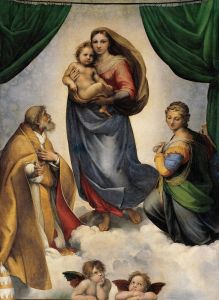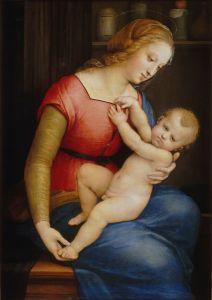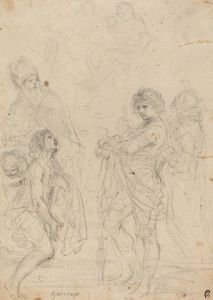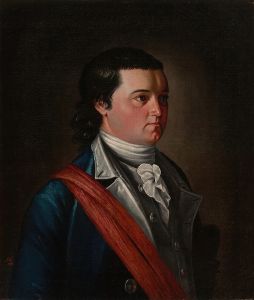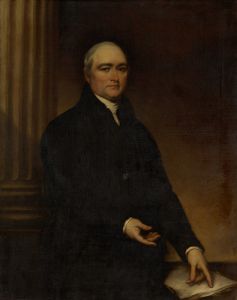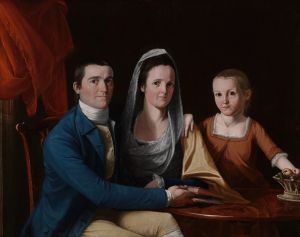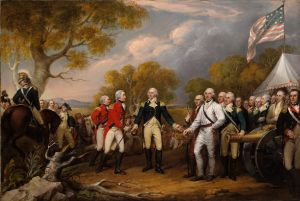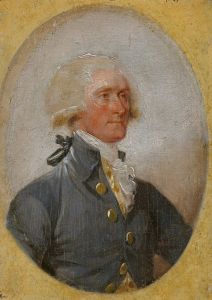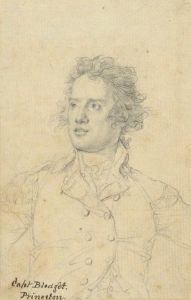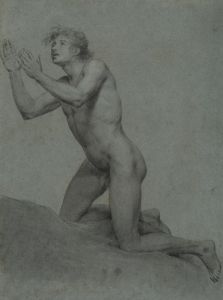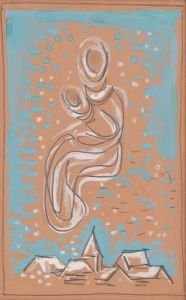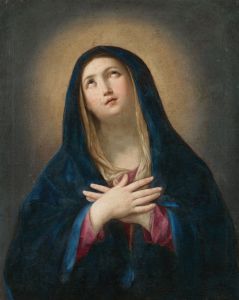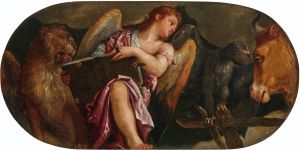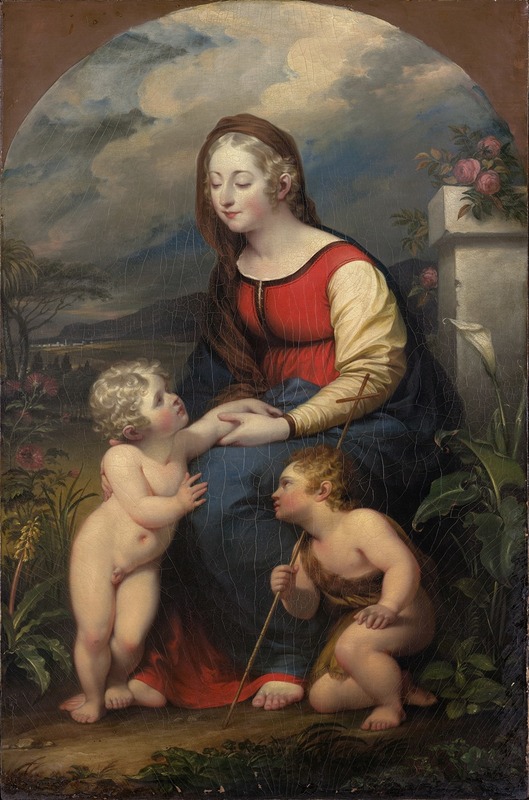
Madonna and Child with St. John the Baptist
A hand-painted replica of John Trumbull’s masterpiece Madonna and Child with St. John the Baptist, meticulously crafted by professional artists to capture the true essence of the original. Each piece is created with museum-quality canvas and rare mineral pigments, carefully painted by experienced artists with delicate brushstrokes and rich, layered colors to perfectly recreate the texture of the original artwork. Unlike machine-printed reproductions, this hand-painted version brings the painting to life, infused with the artist’s emotions and skill in every stroke. Whether for personal collection or home decoration, it instantly elevates the artistic atmosphere of any space.
"Madonna and Child with St. John the Baptist" is a painting by the American artist John Trumbull, who is best known for his historical paintings depicting significant events of the American Revolutionary War. Trumbull was born on June 6, 1756, in Lebanon, Connecticut, and he played a crucial role in the development of American art during the late 18th and early 19th centuries. His works are characterized by their attention to detail and historical accuracy.
The painting "Madonna and Child with St. John the Baptist" is an example of Trumbull's exploration of religious themes, which was less common in his oeuvre compared to his historical works. This piece depicts the Virgin Mary with the infant Jesus and a young St. John the Baptist, a subject that has been a popular theme in Christian art for centuries. The composition typically portrays the tender relationship between the figures, emphasizing themes of innocence, divinity, and the prophetic role of John the Baptist.
Trumbull's approach to this religious subject may have been influenced by his European travels and studies. He spent several years in London, where he studied under the renowned painter Benjamin West. During his time in Europe, Trumbull was exposed to the works of Old Masters, which likely informed his technique and stylistic choices in religious paintings.
While Trumbull is primarily celebrated for his historical paintings, such as "Declaration of Independence" and "The Death of General Warren at the Battle of Bunker's Hill," his religious works demonstrate his versatility as an artist. "Madonna and Child with St. John the Baptist" reflects his ability to convey emotion and narrative through composition and form.
The painting's style is indicative of the neoclassical movement, which was prevalent during Trumbull's time. Neoclassicism sought to revive the classical ideals of harmony, clarity, and restraint, drawing inspiration from the art and culture of ancient Greece and Rome. In "Madonna and Child with St. John the Baptist," Trumbull employs a balanced composition and a subdued color palette, which are characteristic of this artistic movement.
Although specific details about the provenance and current location of "Madonna and Child with St. John the Baptist" are not widely documented, Trumbull's works are held in various prestigious collections, including the Yale University Art Gallery, which houses a significant number of his paintings and sketches. His legacy as a foundational figure in American art history is well established, and his contributions continue to be studied and appreciated by art historians and enthusiasts alike.
In summary, "Madonna and Child with St. John the Baptist" by John Trumbull is a testament to the artist's skill in capturing religious themes with the same precision and depth that he applied to his historical subjects. Through this work, Trumbull demonstrates his engagement with neoclassical ideals and his ability to adapt his artistic vision to a variety of themes beyond the historical narratives for which he is most famous.





